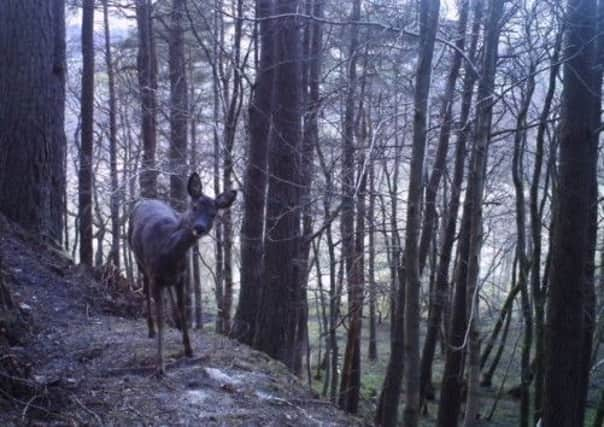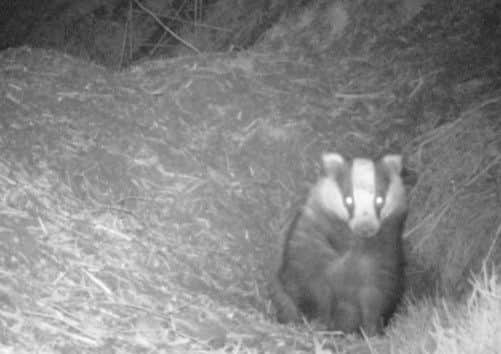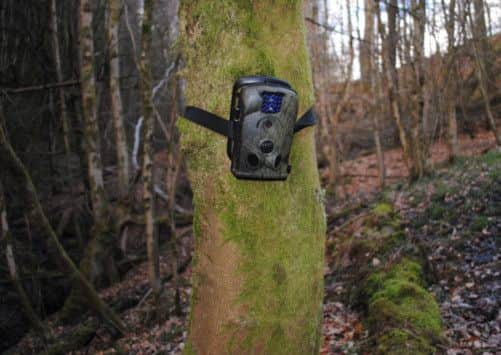Capturing secrets of nature with a camera trap


The concept is delightfully simple – the camera is carefully sited by an animal trail or other likely looking spot and then left for a day or two with it being primed automatically to take a photograph or video when an infra-red sensor detects a passing creature.
Advances in technology mean that such cameras are now increasingly affordable for the amateur naturalist and it was with a great deal of admittedly boyish enthusiasm that I managed to obtain one to try out for myself. The camera, an Ltl Acorn 5210A, was supplied by Martin Bailey of Wildlife & Countryside Services, who says that trail-cams have become very popular in recent years.
Advertisement
Hide AdAdvertisement
Hide Ad“As well as for wildlife detection, they have all kinds of other uses, such as for security and surveillance purposes,” he says. “For ecological study and survey work, they are incredibly useful for monitoring the presence of animals in an area as they provide continual coverage and don’t require the need for an observer, which can prove expensive. A trail-cam also won’t disturb wildlife, while the presence of an observer might.”


The trail camera operates through passive infra-red technology that detects movement through changes in heat, such as that caused by a passing animal. The infra-red LEDs also mean that photo-graphs or video can be taken at night without the need for artificial light.
So, how did I fare with my camera? Costing just under £200 for the more basic models, trail-cams are still not cheap, so my first consideration when setting up the device was to do so in an area where it was unlikely to be discovered by anyone else. I chose a remote wooded location by an established badger path that I had known for several years. I strapped the camera to a tree trunk next to the trail and adjusted it to an angle where I was pretty sure it would capture any passing beast.
My intention was to leave the camera for a couple of days, but the temptation was too much and by lunchtime the following day I found myself excitedly crawling through a thick tangle of undergrowth towards the camouflaged camera so as to examine the fruits of the previous night’s monitoring. But, alas, there was nothing. Some photographs had been taken, but there was no badger or any other animal caught in the frame.
It was time for a rethink. I re-sited the camera about 30m along the same trail, this time lower down and at angle that would present a wider view of the badger path.


However, this time I inadvertently flicked the camera into video mode when setting it up and all that was captured was a couple of pheasants pecking about on the ground during the day. Nothing wrong with that – but their constant lingering drained the camera batteries well before badger emergence time. Frustration was beginning to set in.
However, the following night I struck gold and managed to secure my first nocturnal photos of a badger taken by infra-red. The evening after, I moved the camera to a trail I suspected was being used by deer – and I soon had a fine roe buck in the bag. This was getting addictive and my trail camera was turning into a really essential piece of wildlife kit that I couldn’t imagine being without.
From my limited experience so far, there is certainly a good degree of skill and fieldwork required in using a camera trap effectively. You need to know where to site it and also be careful that heat sources such as direct sunlight don’t inadvertently trigger the infra-red detector. Indeed, such is the expertise required in taking good trail-cam shots that BBC Wildlife magazine is now running an international camera trap photo of the year competition.
Advertisement
Hide AdAdvertisement
Hide AdThe winning entry last year was a quite stunning image of an elusive Chinese leopard, taken with the same model of camera I am using, and which any professional photographer would be proud to be credited with. I obviously won’t be entering any time soon, but that doesn’t matter, for I have a new toy, and boys love their toys.